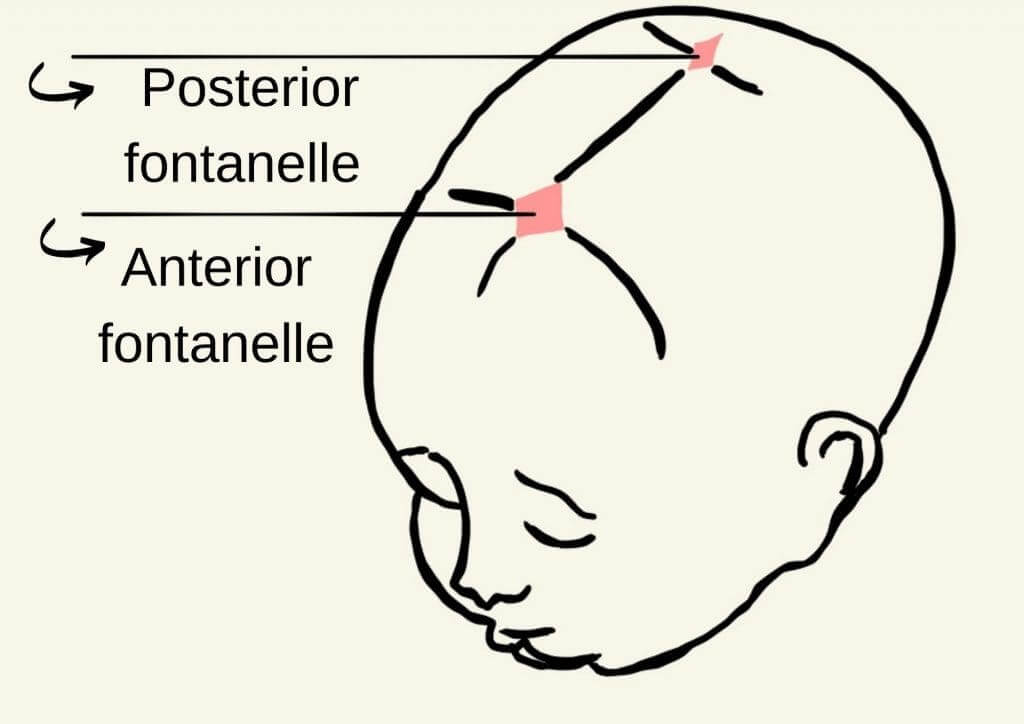
Baby’s fontanels
Fontanel is the soft spot on the front of the baby’s head which many parents are scared to touch.
The following article will discuss the normal size of the fontanels and at what age they close.
What are the fontanels?
Fontanels are the spaces between the bones of the skull (see picture), which are covered by slightly immersed connective tissue and can sometimes feel like beating slightly.
This flexibility of the skull allows a proper transition of the baby in the birth canal and later for the formation of the skull to complete developing properly.
During the first couple of life this connective tissue turns into bone.
How many fontanels a baby has when born?
In most cases, one or two (see figure).
The anterior fontanel – is diamond shaped. Will always appear in birth and usually closes permanently at the age of 18 months, although a proper closure can also occur at the age of 9 months.
The posterior fontanel – is triangle shaped. Can be tiny (finger size) or even closed in birth. In case it’s open in birth it will most likely close at the age of 6-8 weeks. If it doesn’t it can be a sign of hypothyroidism or hydrocephalus.
A third fontanel is rare and is associated with uncommon syndromes.
Is it ok to touch the baby’s fontanels?
There is no point in a direct firm press of this area, but all daily tasks are allowed including kissing, stroking, bathing etc.
How should the fontanels checkup should be done?
Examination of the fontanels should be done in a 45° angle when the baby is calm (sleeping or eating). When the baby is crying, the fontanels can be prominent.
What is the normal size of the front fontanel?
There are various sizes and it is difficult to get absolute numerical norms for the proper size of the front fontanel. In some places the correct average size is set at about 2 by 2 centimeters (give or take 1 cm).
What does a fontanel’s size larger than normal indicate?
In most cases it will indicate a variation and not an illness. In pathological cases it can indicate hypothyroid (in many countries all babies are screened for hypothyroid so if you were not contacted after the birth of the baby, it is likely that that is not the case, read more here on newborn screening program), premature, vitamin D deficiency and other rare syndromes.
An important rule is that a disease will not be manifested solely by an open fontanel, but will usually also occur in other body systems. Therefore, an experienced paediatrician will take all the findings into consideration and not only the size of the fontanel. It is very important in this context to measure the circumference of the head and check it in comparison to a suitable curve measure. In addition, it is important for the pediatrician to discuss with the parents the baby’s development.
What can an unusually small front fontanel indicate?
Again, in most cases a sole finding such as this would not indicate disease but a normal variation of the norm. In pathological cases a small front fontanel will be found in association with microcephaly, craniosynostosis and more. Here too it is very important to monitor the baby’s development and head circumference, a follow-up that is performed in the first two years of the baby’s life.
What is a sunken fontanel?
Again I will mention that it is important to perform the check of the fontanel when the baby is calm and at a 45° angle. In a test done correctly, a sunken fontanel can indicate that the baby is dehydrated.
I really do not suggest parents to frequently check the fontanels in a healthy baby that feels great. But if the child is sick and has diarrhea and vomits, then the paediatrician should check the area of the fontanels.
What is a bulging fontanel or a swollen fontanel?
In context of feverish diseases, the doctor will examine if the fontanel is bulging as it may be a sign of viral or bacterial meningitis. A prominent fontanel can also indicate other pathologies including increased intracerebral hypertension.
For comments and questions, please register
